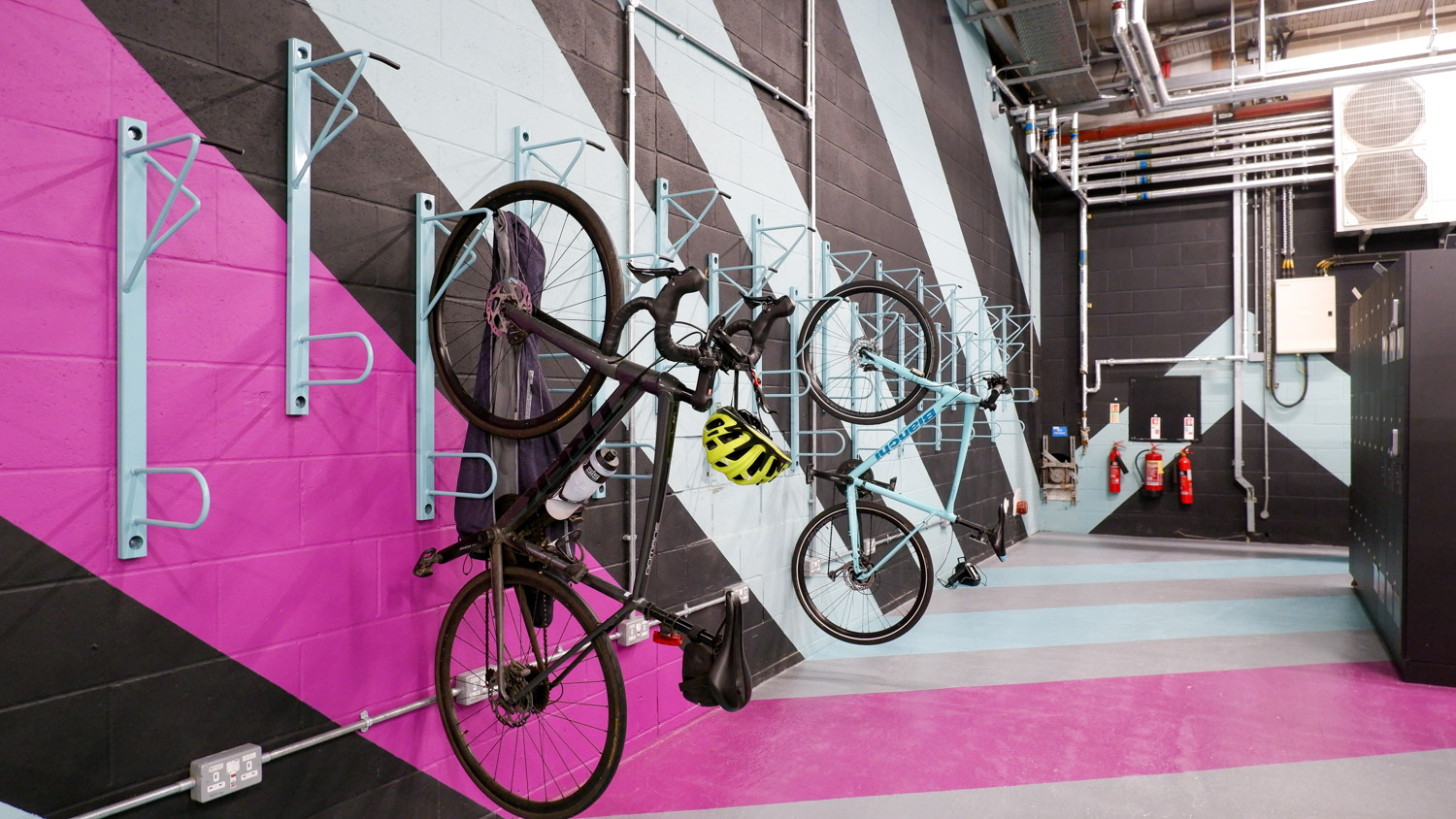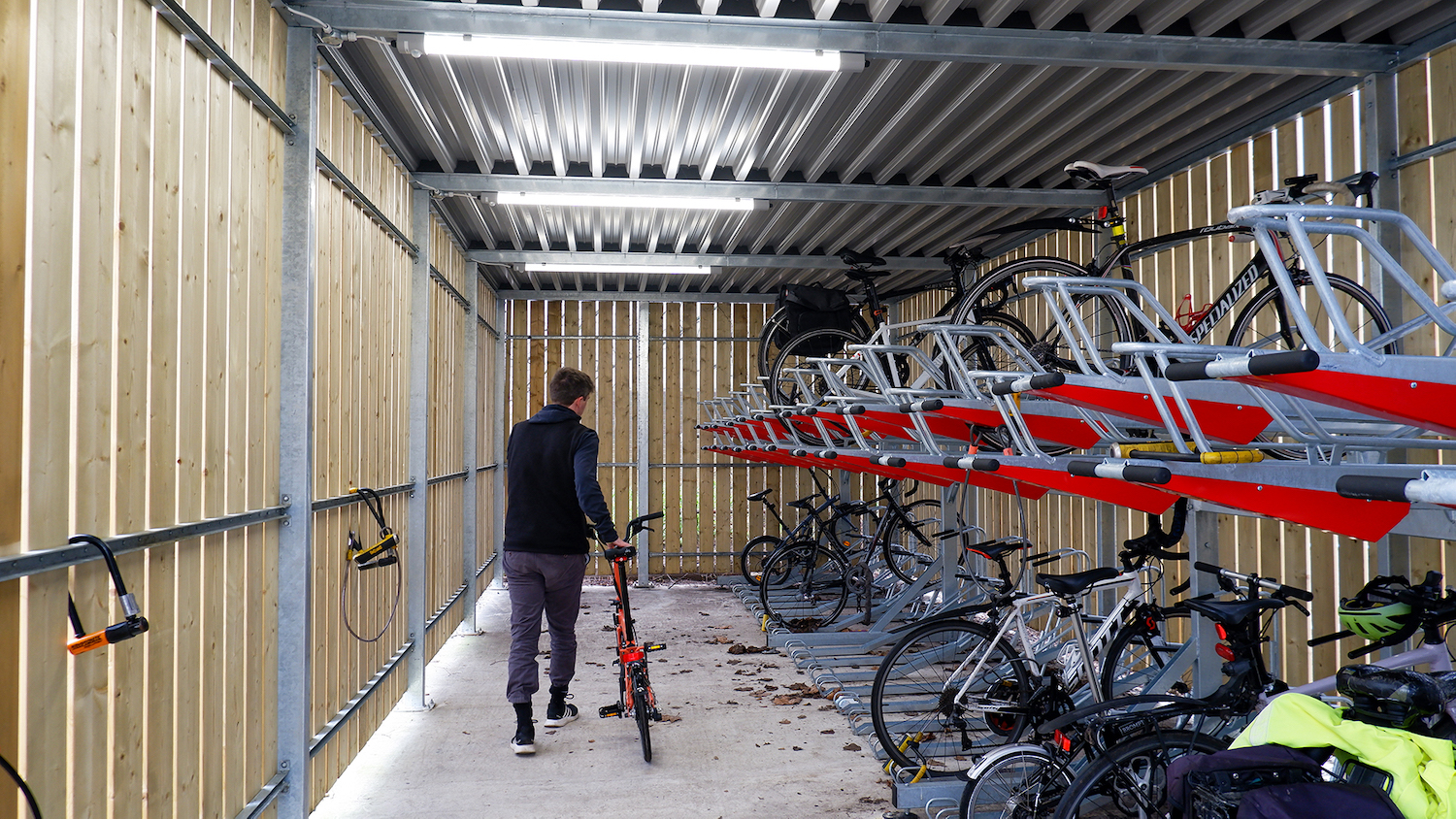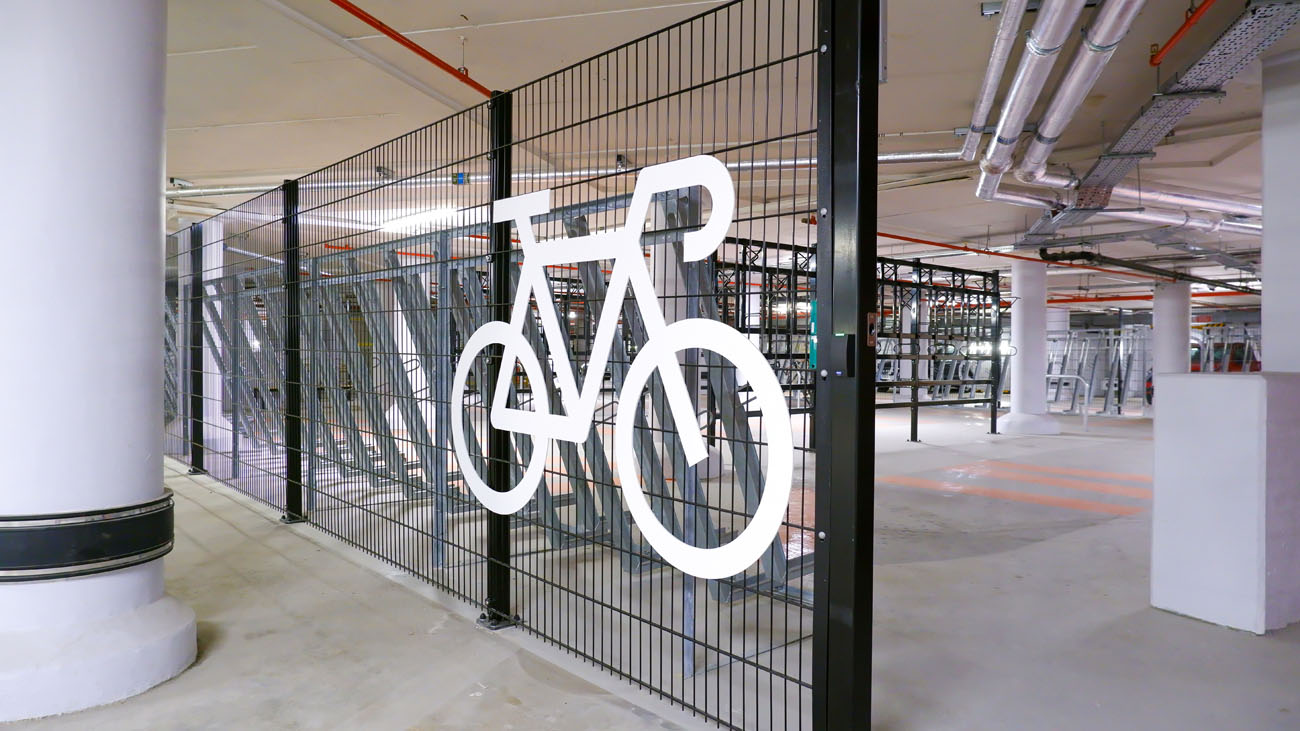Hanging a bicycle vertically is a practical way to store more bikes in secure areas. However, understanding which racks to use and when to utilise vertical cycle storage is crucial for an effective design.
At Turvec, we aim to ensure that all cycle parking solutions meet their required capacity. At the same time, we focus on providing cyclists with the space and accessibility needed to park their bikes safely.
Achieving this balance often involves using different cycle parking methods within the same project. Vertical racks can play a key role in maximising space efficiency.
Maximising Space in Smaller Bike Stores
When space is limited, such as in modern office buildings or commercial developments, vertical bike racks offer a significant advantage.
By storing bikes vertically, you minimise the area a bicycle occupies. This allows for more bikes to be stored in the same space without compromising security or accessibility. This approach is particularly effective in compact bike stores, where every inch counts.
Understanding the Bicycle Envelope
A critical aspect of specifying vertical bike storage is understanding the “bicycle envelope”—the space a bike requires when stored.
For most standard bicycles, the dimensions stated by the Bicycle Association’s cycle parking standards, are as follows: a width of 700mm to accommodate handlebars, a height of 1200mm, and a length of 1800mm.
Vertical racks significantly reduce the horizontal footprint of each bicycle by orienting the bike so it stands on its rear wheel. Using the standard envelope, a saving of 600mm in the horizontal footprint.
However, it’s essential to ensure that the available space is suitable for vertical storage, with a minimum loading distance of 1300mm. Avoiding any ‘dead space’ is key to making the storage area efficient and easy to navigate.
Vertical Racks in End-of-Trip Facilities
In larger bike stores, particularly within end-of-trip facilities, vertical racks can be an integral part of the overall storage solution.
These facilities, which often serve employees who cycle to work, benefit from a variety of bike storage options. Vertical racks help maximise capacity while leaving room for other amenities, such as showers and lockers.
By combining vertical storage with horizontal racks and other systems, you can create a flexible and efficient space that meets the needs of a diverse group of cyclists.
Vertical bike racks can be mounted directly to suitable wall surfaces, mounted on separate posts, or a framed structure. With these three methods, most areas of a bike store can be used to house vertical racks.






